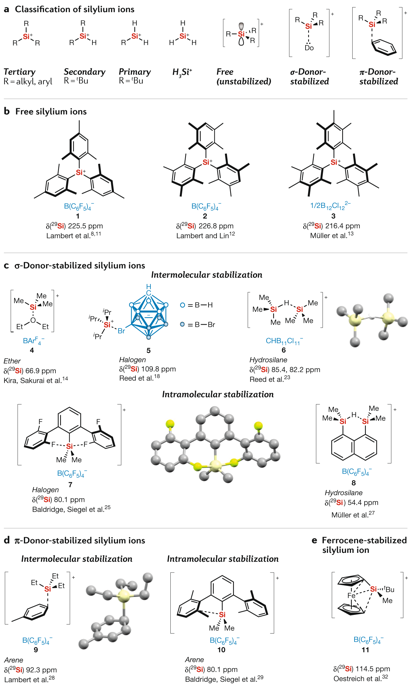Nature Reviews Chemistry ( IF 38.1 ) Pub Date : 2019-11-15 , DOI: 10.1038/s41570-019-0146-7 Johannes C. L. Walker , Hendrik F. T. Klare , Martin Oestreich

|
Silylium ions, or, to be more precise, donor-stabilized silylium-ion-like species, were once only the domain of computational and structural chemists. This was mainly due to the difficulties in generating and isolating these reactive species in a condensed phase. Even chemists focused on reactivity stayed away from such delicate ions. The state of affairs has changed in recent years as methods for their preparation have become more accessible and strategies for their stabilization more effective. Silylium ions have high electrophilicity, oxophilicity and fluorophilicity that have seen them emerge as useful catalysts, including for unique transformations not accessible to metal catalysts. This Perspective aims to provide a concise and conceptual summary of breakthroughs in this emerging area.
中文翻译:

阳离子硅路易斯酸的催化作用
硅离子,或更确切地说,是供体稳定的类硅离子离子物种,曾经只是计算和结构化学家的领域。这主要是由于在冷凝相中难以生成和分离这些反应性物质所致。即使是专注于反应性的化学家也远离这种微妙的离子。近年来,随着准备方法的使用变得更加容易,稳定化的策略更加有效,事态也发生了变化。硅离子具有高的亲电性,亲氧性和亲氟性,已经看到它们成为有用的催化剂,包括用于金属催化剂无法达到的独特转化。本《观点》旨在为这一新兴领域的突破提供简洁,概念性的摘要。









































 京公网安备 11010802027423号
京公网安备 11010802027423号